NOAA Ocean Guardian Schools Lead Environmental Action Across the Nation
By Alyssa Leadingham
October 2023
For the past 14 years, students across the nation have been engaging in hands-on environmental stewardship projects as part of the NOAA Ocean Guardian School program. NOAA Ocean Guardian Schools strive to protect and conserve their local watersheds, national marine sanctuaries, and the ocean. Under the program, PreK–12 schools propose and implement a school- or community-based stewardship project, spanning five program pathways: Watershed Restoration, School Garden/Habitat, Energy and Ocean Health, Marine Debris, and 6Rs (Rethink/Reduce/Refuse/Reuse/Recycle/Rot).
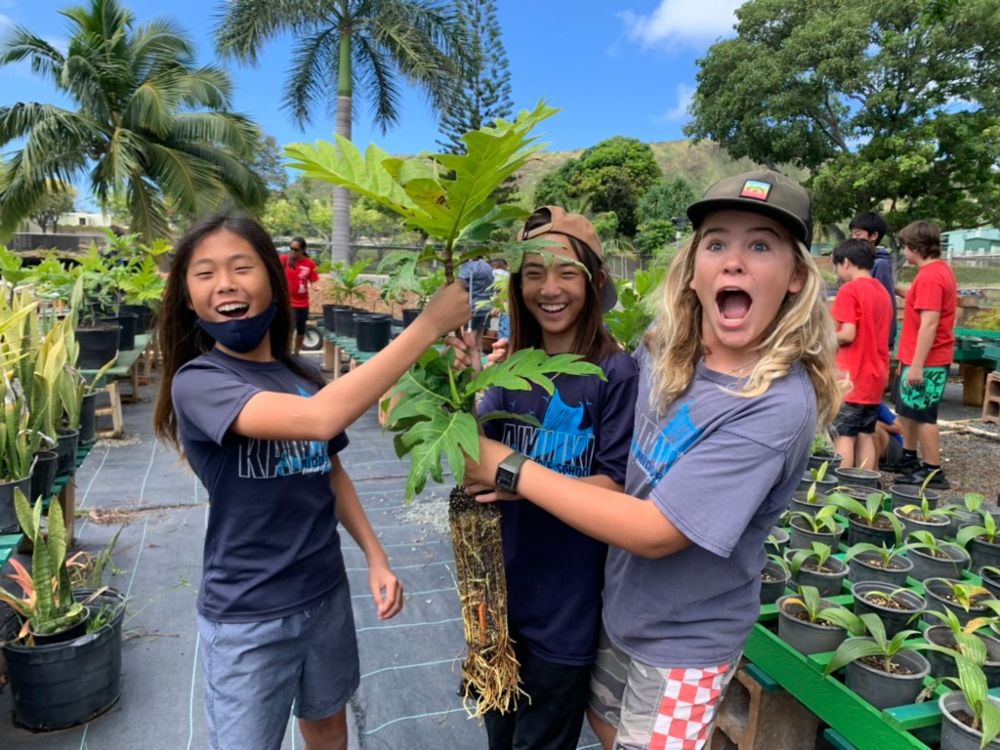
Program Snapshot
During the 2022–2023 school year 7,253 students from 59 schools across the country participated in stewardship projects on campus and in their local communities. With the help of 329 teachers, students brought to light many of the environmental issues their communities are currently facing.
“NOAA Ocean Guardian Schools provide opportunities for youth to be engaged in activities that directly impact the health of their environment,” said Seaberry Nachbar, director of the NOAA Ocean Guardian School program. “These opportunities help students realize that changes they make in their daily lives can impact and safe-guard our one global ocean, including national marine sanctuaries and local watersheds. I’m so proud of the results we have seen through this program, which proves that empowering students gives hope for the future."
Data submitted by each teacher at the end of the school year highlights the tangible impact NOAA Ocean Guardian School students make in their communities.To make space for native plant restoration, schools across the nation collaboratively removed 7,408 square feet of non-native invasive plants. In total, students planted 331 native trees along with 4,370 native plants. Waste reduction is another popular initiative students tackled. The students removed a staggering 39,632 pounds of trash from neighborhoods and beaches, and 81,637 pounds of food waste was diverted from local landfills. Several schools opted to install water bottle refill stations, therefore avoiding the use of over 400,000 single-use plastic water bottles.
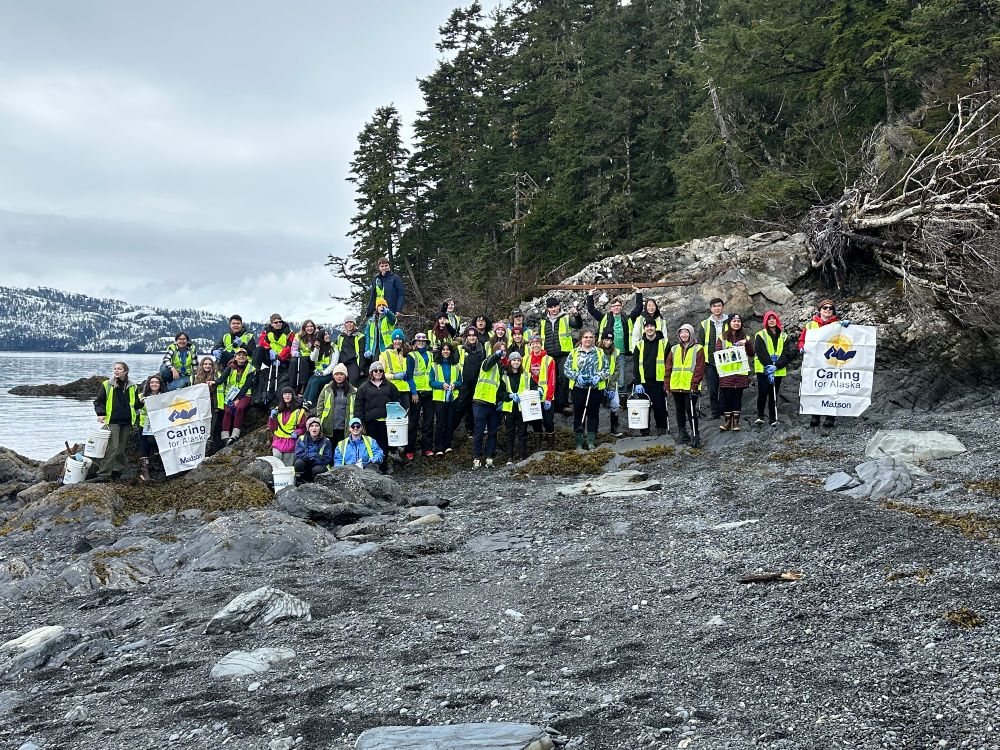
Featured Ocean Guardian Projects
On April 27th, 39 students from Dimond High School (Anchorage, Alaska) traveled from Anchorage to Whittier, Alaska to reach remote beaches where they collected 481.5 pounds of trash. Local engineer, Patrick Simpson of Alaska Plastic Recovery, assisted students as they sorted and weighed the marine debris, and demonstrated his process of turning debris into a synthetic lumber called grizzly wood. Between two coastal cleanups and their frequent campus cleanups, Dimond High School students successfully removed over 1,000 pounds of trash from the nearby Campbell Creek Watershed and remote Prince William Sound beaches throughout the year.
Catherine T. Walker, lead teacher at Dimond High School, sees her students’ involvement in the NOAA Ocean Guardian School program as a career-building opportunity. “Alaska has a huge variety of careers related to ocean sustainability”, states Walker. “My goal is to continue to teach problem-based and career-focused lessons that will spread awareness of these jobs so students can prepare for them.”
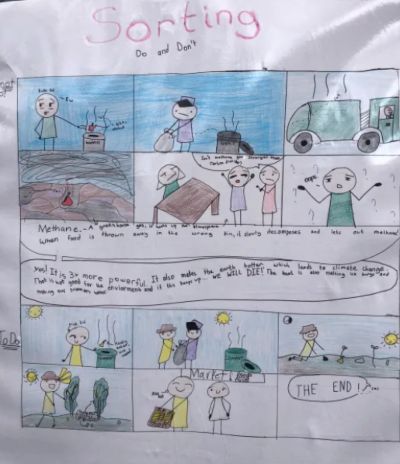
At Lincoln Middle School (Alameda, California) 162 sixth grade students spent time learning about the impacts of energy use on climate change. In response to this lesson, students developed individual climate action plans and implemented at-home behavioral changes to reduce their carbon footprint. Following their individual actions, students investigated various causes of food waste on campus and proposed several solutions for the food service and custodial crew to adopt. These included reviving a salad bar to allow students to choose the produce they want, sharing or donating food they did not want to consume, replacing single-use packaging, training students on how to properly sort waste, and starting a campus composting program. Due to the students’ inspiring advocacy, their local school district decided to also implement a number of districtwide climate-friendly initiatives.
Kaimuki Middle School (Kaimuki, Oʻahu) students’ main goal for the 2022–2023 school year was to create a Polynesian voyaging inquiry experience; where students could engage with each other, the ʻāina (land), their community, and the world. Kaimuki students specifically aimed to develop a deeper understanding of their watershed, marine ecosystems, climate change, its interconnectedness with their food systems, and took concrete action to develop personalized solutions they could share with the wider community. Lead teacher Lianna Lam stated that “the Voyager Center became a bustling hub of student creativity and collaboration. Students fostered a deep love for gardening and caring for the Earth, developed marine science projects, and created cultural recipes that were grounded in climate consciousness.”

Students Engaging in the Environment through Discovery and Science (SEEDS) students at Yorkshire Academy (Houston, Texas) worked over the past year to address marine debris head-on through a variety of environmental initiatives. Fourth and fifth grade students researched product packaging, designed alternative packaging prototypes that would generate less waste, and wrote letters to Texas companies to share their inventions. They also participated in a local beach cleanup for the 50th anniversary of NOAA's National Marine Sanctuary System, where they collected almost 43 pounds of trash and categorized the different types of marine debris that was found along the shoreline.
“The day at the beach really connected this city-bound school with their ocean and empowered the students as stakeholders for the future,” said Jacqueline Stanley, lead teacher at Yorkshire Academy.
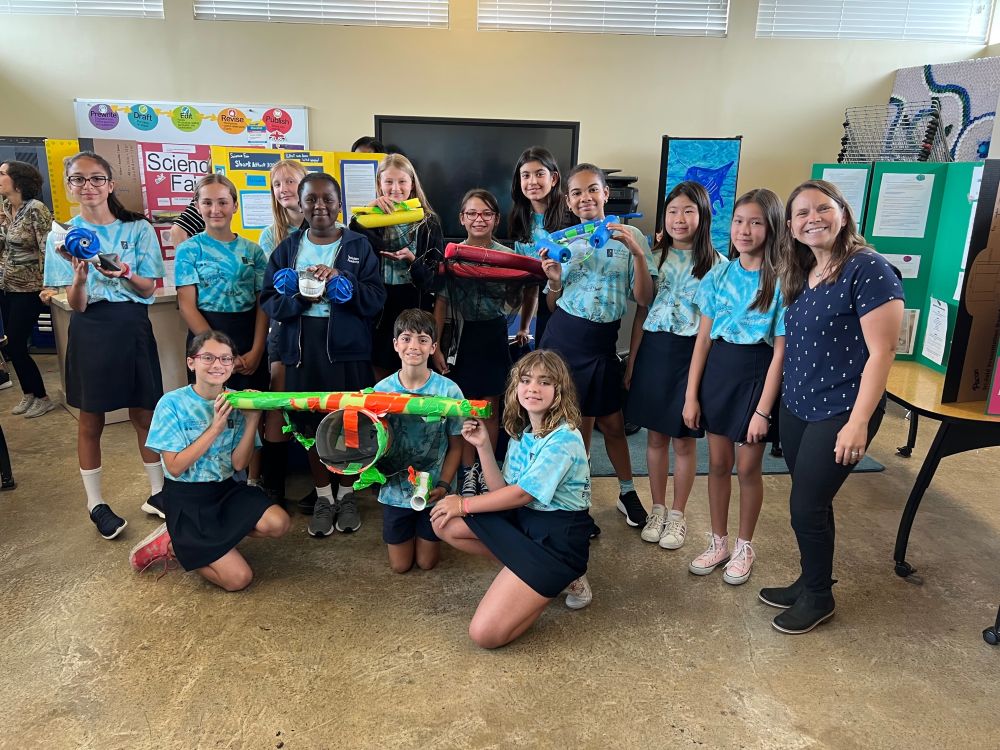
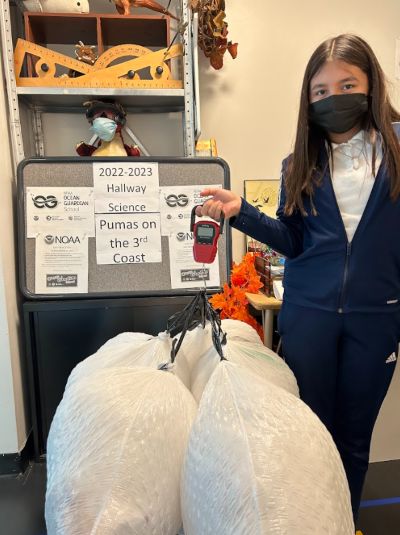
Students at Jovita Idar Elementary School (Chicago, Illinois) have not allowed their distance from the ocean to discourage them from taking action. As residents along the beautiful shore of Lake Michigan, students and their nearby community have banded together to protect their local watershed. As part of this effort, Jovita Idar Elementary focused their Ocean Guardian School project on reducing single-use plastic waste. Throughout the year, students collected and recycled roughly 32,000 single-use plastic bags. With this impressive collection in mind, they leveraged their success by raising money for a bench to be installed in their school garden composed entirely of recycled plastic bags. Outside of their 6R’s project pathway, students also helped plan, build, and maintain a school community garden, restored prairie, and natural wetland area. With the help of their lead teacher, Ryan D. Johnson, students at Jovita Idar Elementary are preparing for an environmentally-conscious future. “These students are going to grow up knowing the words recycling, composting, urban agriculture, water conservation, energy saving, pollinators, and more,” said Johnson. “Because it is a visible, integral, and fun part of their education, the hope is that it will become a part of their identities as well, growing the next generation of environmentally conscious advocates that simply want to do what is right for themselves, their communities, and the world.”
Ocean Studies Charter School (Key Largo, Florida) recently completed its fifth and final year in the watershed restoration pathway. Students were successful in maintaining a mangrove and seagrass nursery, eventually taking ownership, measuring and caring for the plants on their own. Following cultivation, over 200 students dedicated their time towards monitoring and restoring local mangrove and seagrass communities; planting nearly 100 native mangroves in state parks across their region. In addition to their restoration work, students collected and removed over 13,000 pounds of trash from their community! Through their Ocean Guardian School project students gained a deep understanding of the importance of these habitats to their local watershed, and their collective responsibility to act as its stewards. Ocean Studies Charter students conducted external outreach by sharing their project with the broader community, educating others on the connections between these habitats and the global ocean.
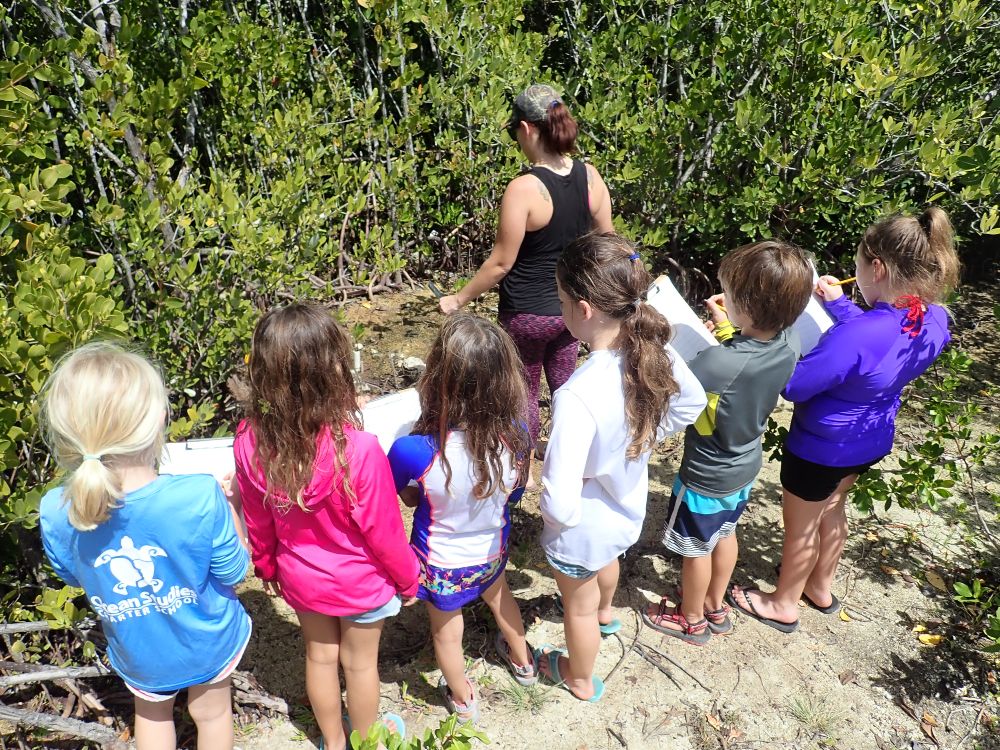
Expanding Reach
With the help of NOAA Fisheries, NOAA’s Marine Debris Program, the National Marine Sanctuary Foundation, and various external partners, the NOAA Ocean Guardian School program is continuing to expand to new regions across the country. In the 2023–2024 school year, $128,824 has been awarded to a new cohort of Ocean Guardian Schools. Students from 72 schools across 14 states and 3 U.S. Territories are joining together to restore watershed and marine ecosystems, reduce their dependence on single-use plastics, encourage their educational leadership to adopt climate-friendly alternatives, and advocate for expansive environmental change across their communities. With students leading the way, we all have what it takes to listen, learn, and collectively take action to protect the health of our local watersheds and ocean.
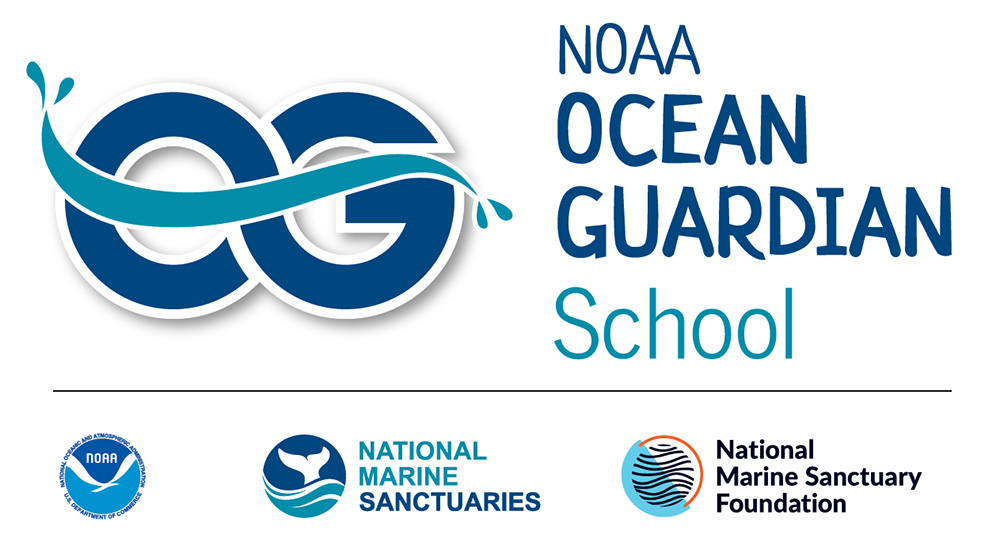
Does your school have what it takes to help protect the ocean and environment for future generations? The 2024–2025 application will be available to download from our website by April 1, 2024. Please review the NOAA Ocean Guardian School Program Guidelines and Requirements for more detailed information about the program prior to submitting an application.
Alyssa Leadingham is the NOAA Ocean Guardian School program coordinator at NOAA’s Office of National Marine Sanctuaries. The NOAA Ocean Guardian School Program is managed by NOAA's Office of National Marine Sanctuaries.

